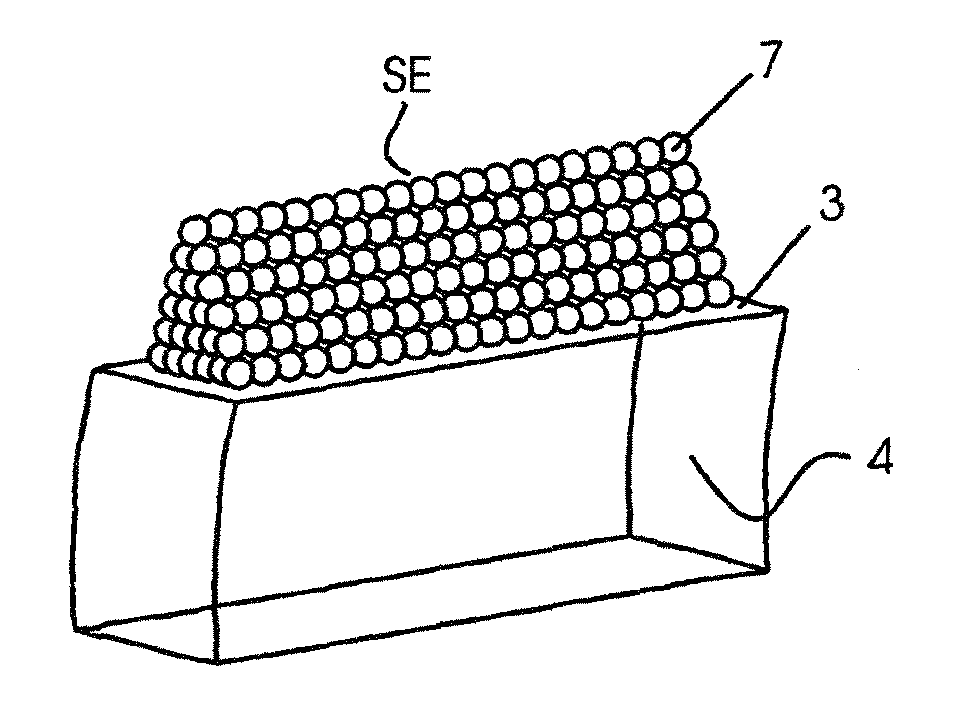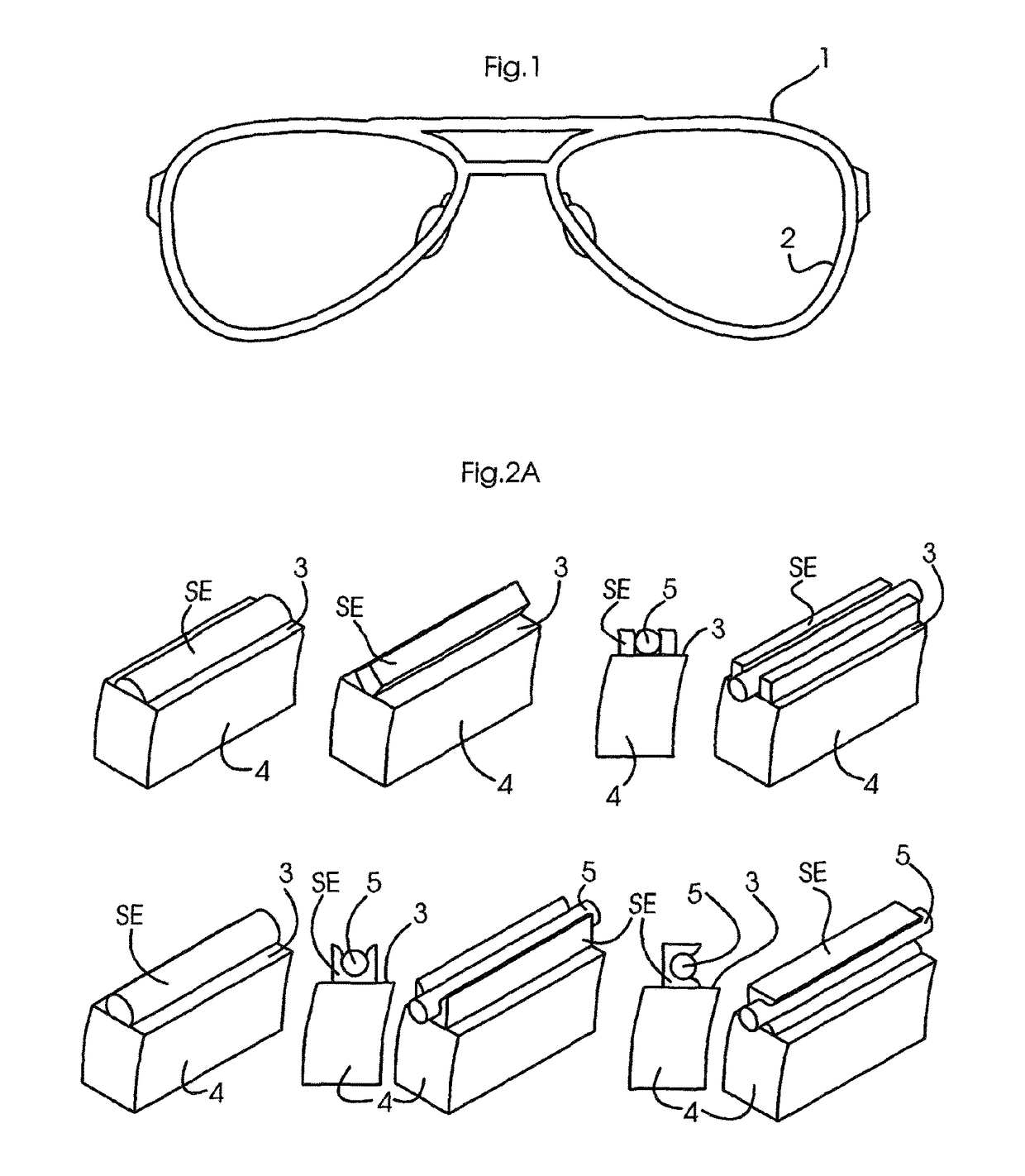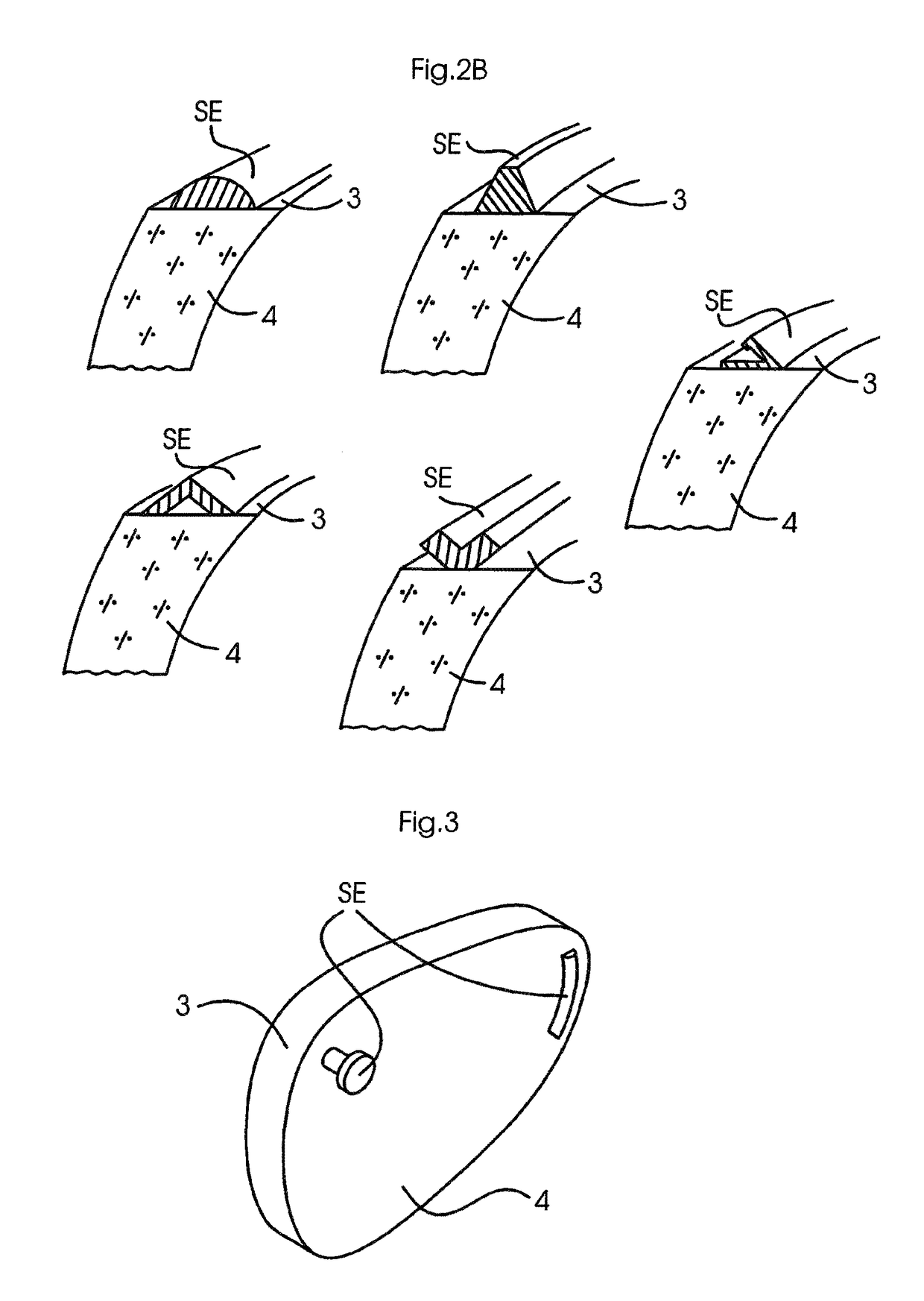Method of making an eyeglass lens
a technology of eyeglass lens and lens ring, which is applied in the field of eyeglass lens, can solve the problems of affecting the manufacturing precision of eyeglass lens, affecting the quality of eyeglass lens, so as to achieve the lowest possible manufacturing precision, the effect of varying the elasticity of a structural element and very fast conversion
- Summary
- Abstract
- Description
- Claims
- Application Information
AI Technical Summary
Benefits of technology
Problems solved by technology
Method used
Image
Examples
Embodiment Construction
[0065]FIG. 1 shows a full-rim frame 1 that has on the inside of the rim 2 a predetermined shape (not shown here), generally a facet to receive a corresponding shape on an edge 3 of an eyeglass lens 4 of suitable shape.
[0066]For such a frame, corresponding structural elements SE, that either correspond to the shape of the frame rim or adapt thereto due to flexibility, are arranged on the edge 3 of an eyeglass lens 4.
[0067]FIGS. 2A and 2B show a large number of possible shapes of structural elements SE that are provided for application to the lens edge 3 of an eyeglass lens 4, as described in the introduction. In this case the forms 1, 2 and 4 of FIG. 2A and the forms of FIG. 2B are suitable for use in a full-rim frame.
[0068]The forms 3, 5 and 6 of FIG. 2A show structural elements SE that are provided to receive Nylon filaments 5. For this purpose, they form, on their own or at least in conjunction with the edge, seat grooves into which the filament 5 can be laid.
[0069]FIG. 3 shows ra...
PUM
| Property | Measurement | Unit |
|---|---|---|
| shape | aaaaa | aaaaa |
| viscosity | aaaaa | aaaaa |
| shear force | aaaaa | aaaaa |
Abstract
Description
Claims
Application Information
 Login to View More
Login to View More - R&D
- Intellectual Property
- Life Sciences
- Materials
- Tech Scout
- Unparalleled Data Quality
- Higher Quality Content
- 60% Fewer Hallucinations
Browse by: Latest US Patents, China's latest patents, Technical Efficacy Thesaurus, Application Domain, Technology Topic, Popular Technical Reports.
© 2025 PatSnap. All rights reserved.Legal|Privacy policy|Modern Slavery Act Transparency Statement|Sitemap|About US| Contact US: help@patsnap.com



